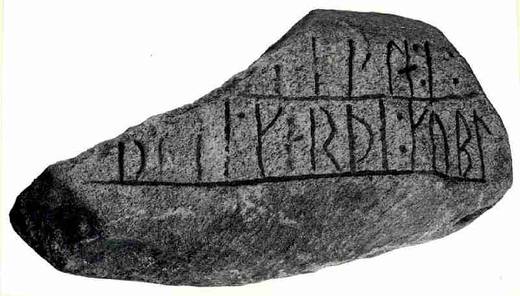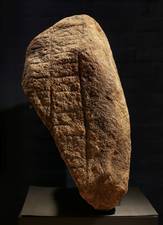Basse’s rune stone
In 1964 a third rune stone was discovered in Jelling. This lay in the stone wall north-west of Jelling Church and was incomplete.
The remnants of the inscription read “Basse made this monument in honour of ... le i...”. The words follow the common formula on rune stones. First the person who raised the stone is named, and then the deceased, in whose honour the stone is carved. Basse’s rune stone does not have a direct connection with the other monuments at Jelling. We can just assume that it was erected for a significant person, who lived at around the same time as Kings Gorm and Harald. Today the stone is exhibited at Royal Jelling.
Can a Viking be called Basse?
Today the name “Basse” is perhaps most of all a pet name, as used for a small boy for example. But a “basse” is also an old name for a wild boar, a far from harmless animal. In the medieval period there was a noble family with the name of Basse and the family displayed a wild boar’s head on its weapons. So apparently the Viking Basse had been satisfied with a name, which signalled both wildness and masculinity.



